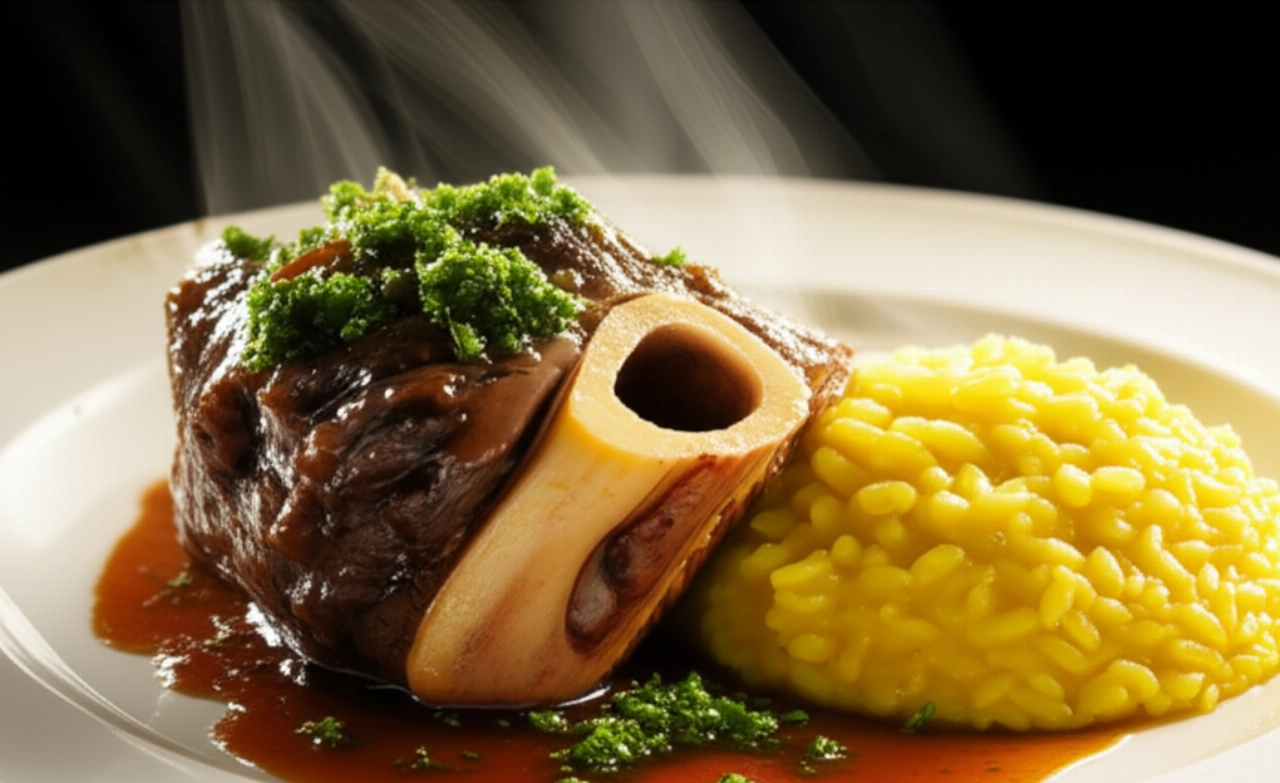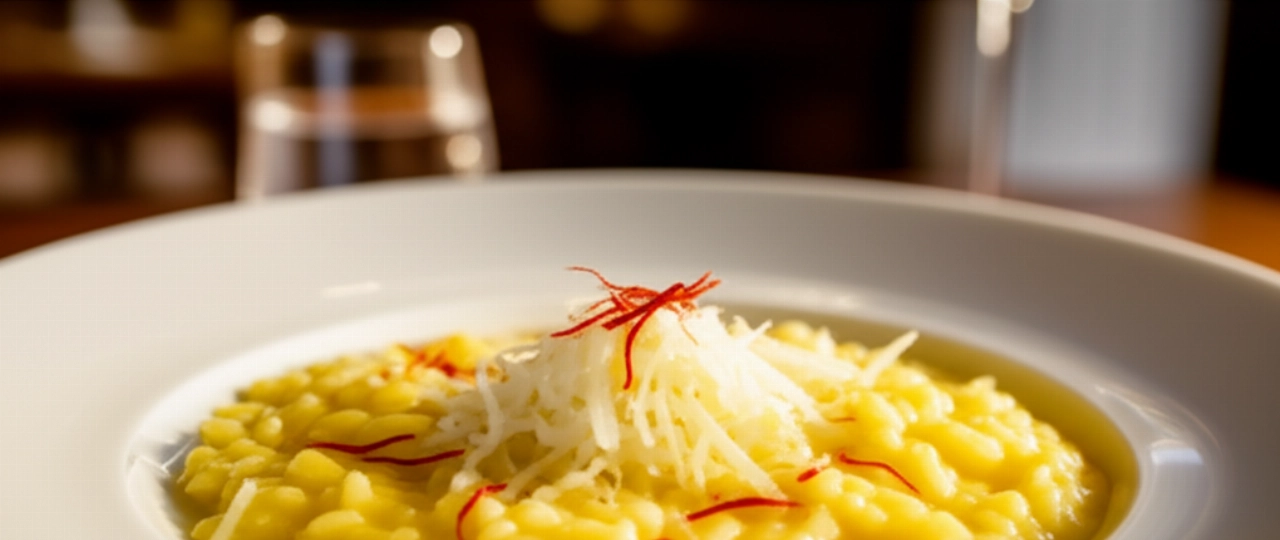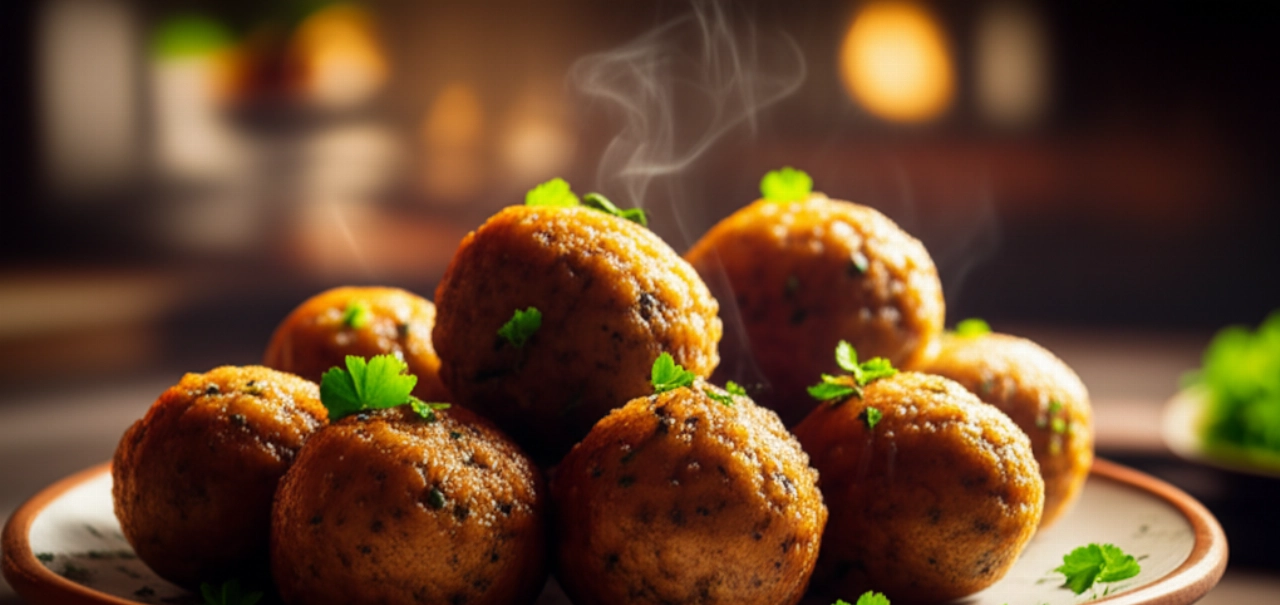Dreaming of bringing a dish to the table that smells of tradition, capable of warming the heart and soul on cold winter days? Cassoeula is exactly that: a flavorful embrace, an ode to the most authentic Milanese cuisine.
But let's face it, preparing Cassoeula can seem like a titanic undertaking. Between choosing the meats, the long cooking time, and the fear of not achieving that 'true' flavor, kitchen anxiety is just around the corner. How many times have you given up for fear of making a mistake or wasting ingredients?
Make yourself comfortable. On this page, you won't just find a list of ingredients, but the definitive guide, full of tricks and tips, to prepare the best and most authentic Cassoeula you've ever tasted. Success is guaranteed, and your table will be a triumph of flavors and applause!
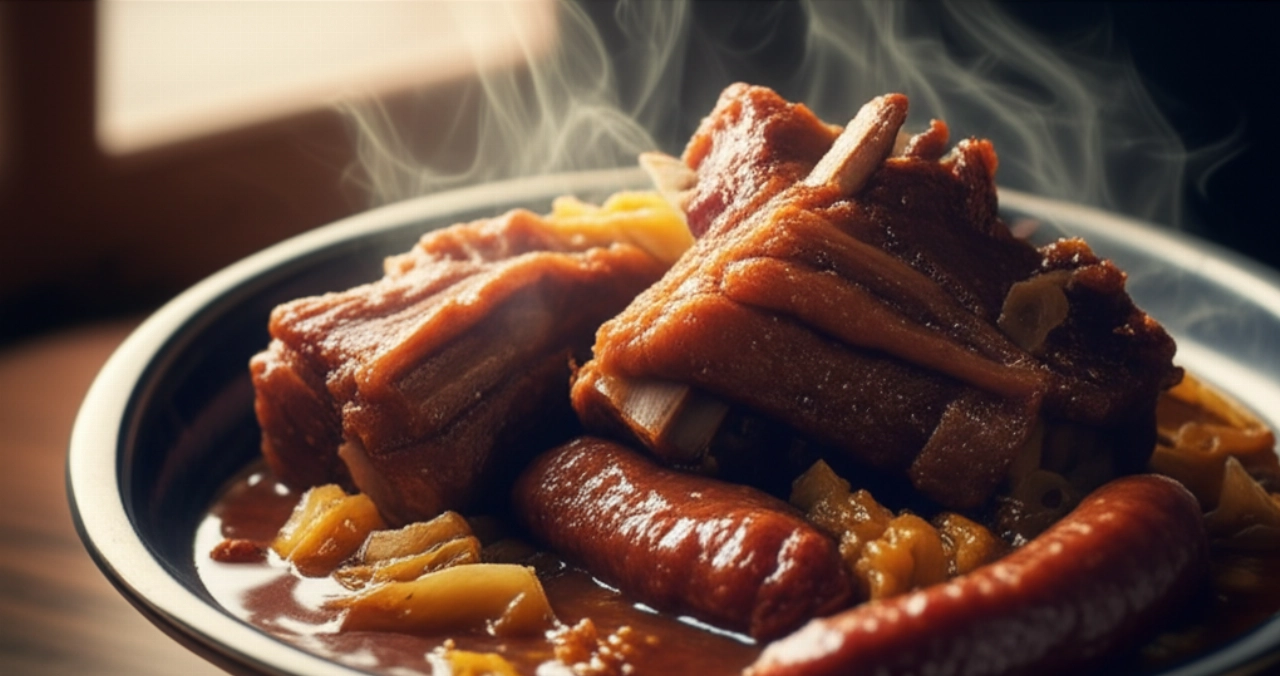
Smart Ingredients: The Choice That Makes a Difference
For a respectable Cassoeula, the quality of the ingredients is fundamental. It's not just about quantity, but about carefully choosing each piece, because each one contributes to the final masterpiece.
- Pork ribs: Choose meaty ones, they are the base of the flavor. Their fatty part will slowly melt, giving tenderness and taste.
- Pork rinds (cotiche): Cleaned and rolled, they are a must for the gelatinous consistency and unmistakable flavor. Don't be afraid of them, they are a treasure!
- Small sausages (or luganega): Prefer fresh pork ones, not too aged. They add an aromatic touch and a unique savoriness.
- Savoy cabbage: The true vegetable protagonist. Choose the winter variety, which is more robust and flavorful. It will absorb all the aromas of the meats, becoming incredibly tender and velvety.
- Carrots, celery, onion: The classic soffritto, the aromatic base that welcomes and enhances all other flavors. Don't skimp on their quality.
- Tomato paste: Just a little, to give color and a note of acidity that balances the richness of the meats.
- Dry white wine: To deglaze the bottom, releasing all the aromas and adding depth to the sauce.
- Meat broth: Prepare it at home if you can, it will make a difference. Otherwise, a good quality granular broth.
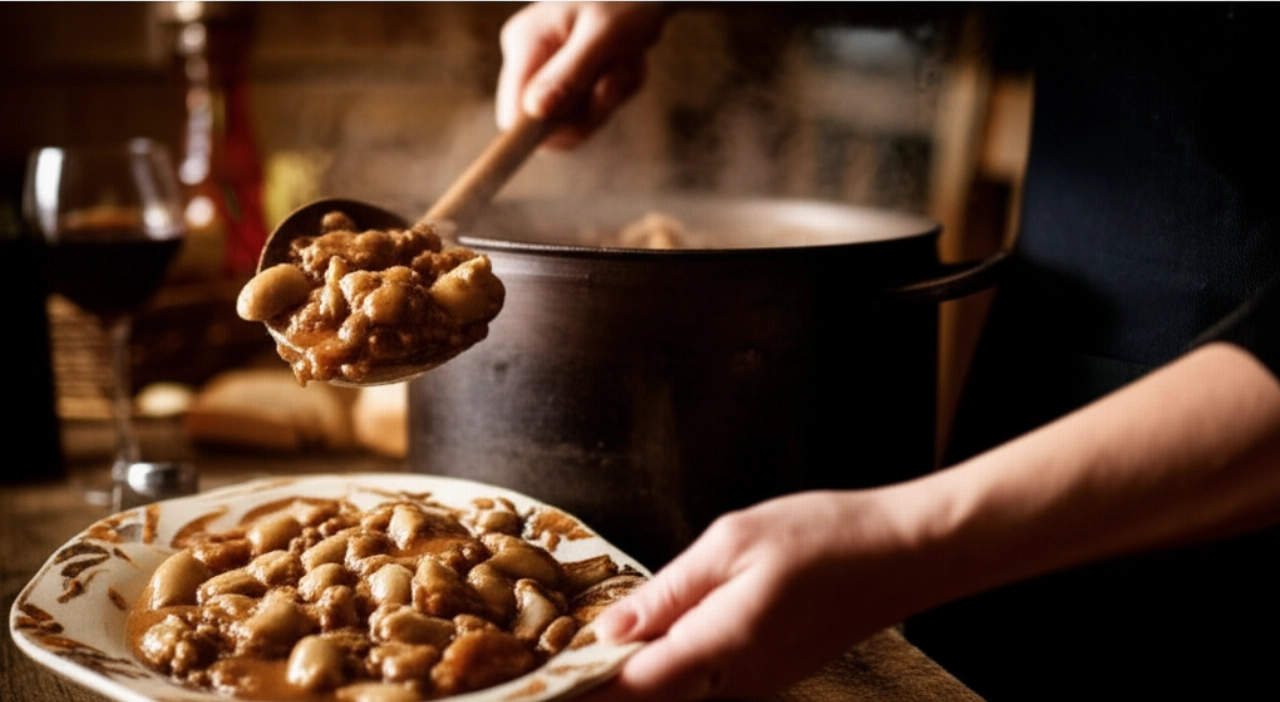
Mistakes to Avoid: Secrets for a Perfect Cassoeula
Preparing Cassoeula is an art, but also a science. Here are the most common mistakes you might encounter and how to avoid them, for a result that will make you feel like a true chef.
- Not cleaning the meats properly: The pork rinds and trotters should be blanched and carefully scraped to remove any impurities. This step is fundamental for a clean and authentic flavor.
- Not browning enough: The meats must be well browned on all sides before adding liquids. This is what creates the flavorful 'crust' and develops the complex aromas that characterize Cassoeula.
- Adding the cabbage too early: The savoy cabbage has different cooking times than the meats. Add it only halfway through cooking, when the meats are already tender, to prevent it from falling apart too much or remaining raw.
- Rushing the cooking: Cassoeula is a dish that requires time and patience. Slow cooking over low heat allows the meats to become incredibly tender and the flavors to blend perfectly. Don't rush, patience will be rewarded!
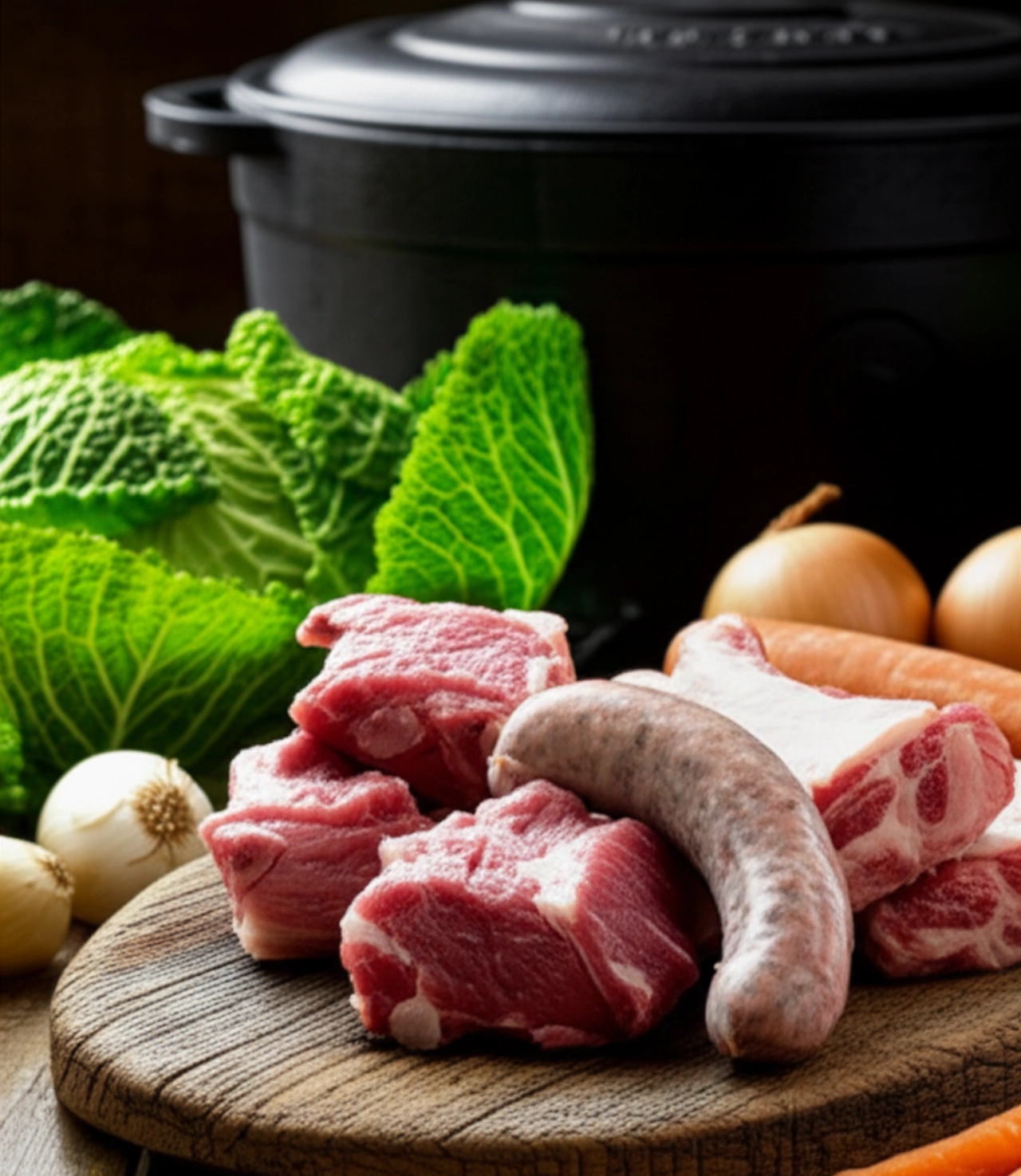
The Extra Touch: My Grandmother's Handed-Down Tip
My grandmother, a true Milanese cooking master, had a secret to make her Cassoeula unforgettable. She always told me: 'Remember, the secret is not just in the ingredients, but in respecting the timing and the final touch.'
She used to prepare the pork rinds and trotters the day before, blanching and cleaning them with extreme care. But the real trick was to add, in the last 30 minutes of cooking, a ladleful of broth in which she had dissolved a teaspoon of corn flour (or fumet). This small gesture made the Cassoeula sauce incredibly velvety and shiny, without making it heavy. A secret for an amazing 'scarpetta' (bread-mopping)!
Let's Prepare Cassoeula Together: The Step-by-Step Guide
Now that you have all the secrets, let's get cooking! Follow each step carefully and you'll see that your Cassoeula will be a masterpiece.
- Prepare the meats: Wash the ribs, trotters, and pork rinds thoroughly. If using trotters and pork rinds, blanch them in boiling water for 10 minutes, scrape the skin well to remove any hairs, and cut them into pieces. Roll the pork rinds and tie them with kitchen twine. Cut the small sausages into large pieces.
- Start browning: In a large, heavy-bottomed pot (preferably cast iron), heat a drizzle of oil or a piece of butter. Brown the pork ribs on all sides until well golden. Remove them from the pot and set aside.
- Add the other meats: In the same pot, add the trotters and pork rinds. Brown them well for a few minutes, then deglaze with white wine. Let the alcohol evaporate completely.
- Prepare the soffritto: Add the chopped onion, carrots, and celery cut into cubes. Sauté the vegetables gently for about 10 minutes, until tender and transparent.
- Combine everything and cook: Return the ribs to the pot. Add the tomato paste and mix well. Cover with hot meat broth, almost covering the meats. Bring to a boil, then reduce the heat to minimum, cover with a lid, and let simmer for about 1 and a half hours.
- Prepare the savoy cabbage: Meanwhile, clean the savoy cabbage, removing the harder outer leaves. Cut it into wide strips and blanch it in salted water for 5-7 minutes. This step helps make it more digestible and removes bitterness. Drain it well.
- Add the savoy cabbage and sausages: After 1 and a half hours of cooking the meats, add the blanched savoy cabbage and the small sausages to the pot. Stir gently. If necessary, add more hot broth to keep the meats almost covered. Continue cooking for another 1 and a half hours, or until the meats are very tender and easily fall off the bone. The sauce should be thick and rich.
- Resting: Once ready, turn off the heat and let the Cassoeula rest for at least 15-20 minutes before serving. This allows the flavors to settle and the sauce to thicken further. Even better, prepare it the day before: it will be even more delicious!
- Serve: Serve the Cassoeula hot, accompanied by steaming polenta or good homemade bread for 'scarpetta'. Enjoy your meal!
Tips and Frequently Asked Questions about Cassoeula
Still have some doubts? No problem! Here are the answers to the most common questions to ensure guaranteed success.
- Can I use other cuts of pork?
- Certainly! In addition to ribs, pork rinds, and trotters, you can also add verzini (small sausages), spare ribs, or even a piece of cotechino. The important thing is to respect the cooking times of each cut.
- Can Cassoeula be prepared in advance?
- Absolutely yes, in fact! Cassoeula is one of those dishes that, like good wine, improves the day after. The flavors blend and intensify. You can prepare it the day before and gently reheat it before serving.
- How can I store leftover Cassoeula?
- You can store it in the refrigerator in an airtight container for 2-3 days. It can also be frozen in portions: once thawed, by reheating it slowly, it will maintain its flavor and consistency.
- My Cassoeula is too liquid, what can I do?
- If the sauce turns out too liquid, you can remove the lid in the last 30-45 minutes of cooking and slightly increase the heat to evaporate the excess liquid. Alternatively, you can use the grandmother's trick with a teaspoon of corn flour dissolved in a little hot broth.
There you have it! Now you don't just have a recipe, but all the secrets to bring the true Milanese Cassoeula to your table, a dish that tastes of home, tradition, and love. A masterpiece of robust and enveloping flavors, perfect for warming up winter evenings.
Don't be afraid to experiment and make this recipe your own. Cooking is an act of creativity and sharing. But start from this solid base and you'll see that applause will not be lacking, and your guests will ask for seconds!
Have you tried our Cassoeula recipe? We're very curious to see your masterpiece! Leave a comment below, tell us how it went, or share a photo on Instagram by tagging @CercaRicette.it. If you loved this unique dish, you can't miss our recipe for Creamy Polenta or another winter classic like Brasato al Barolo.
